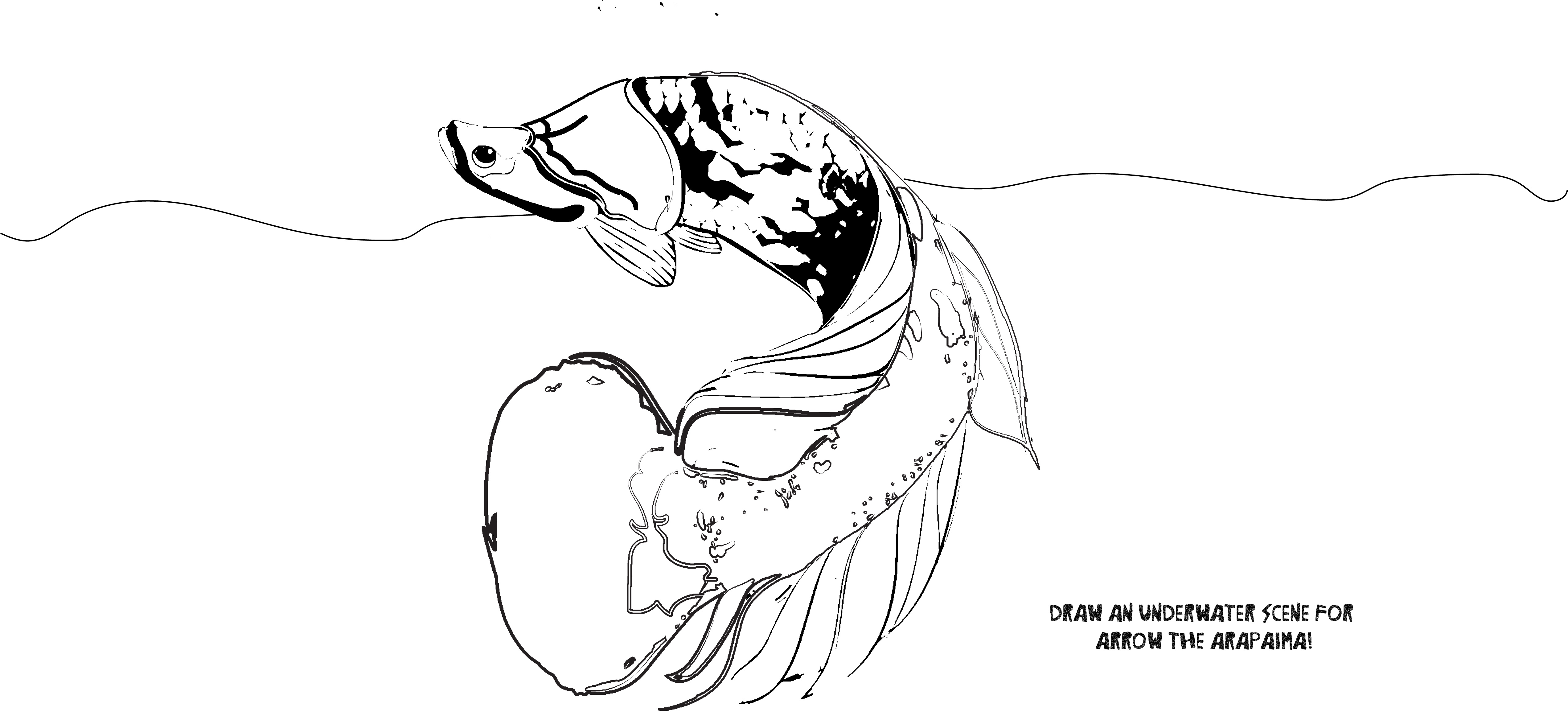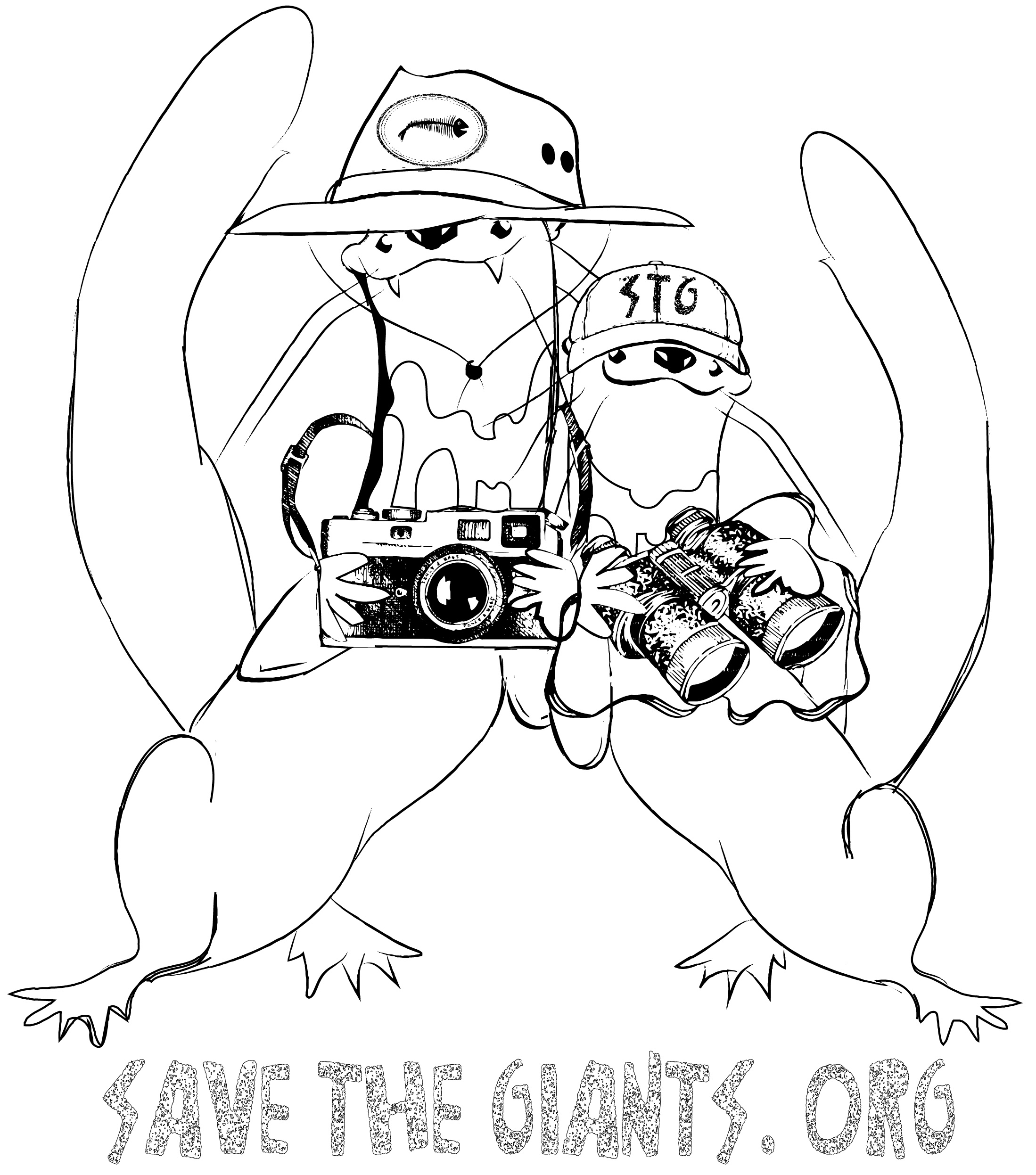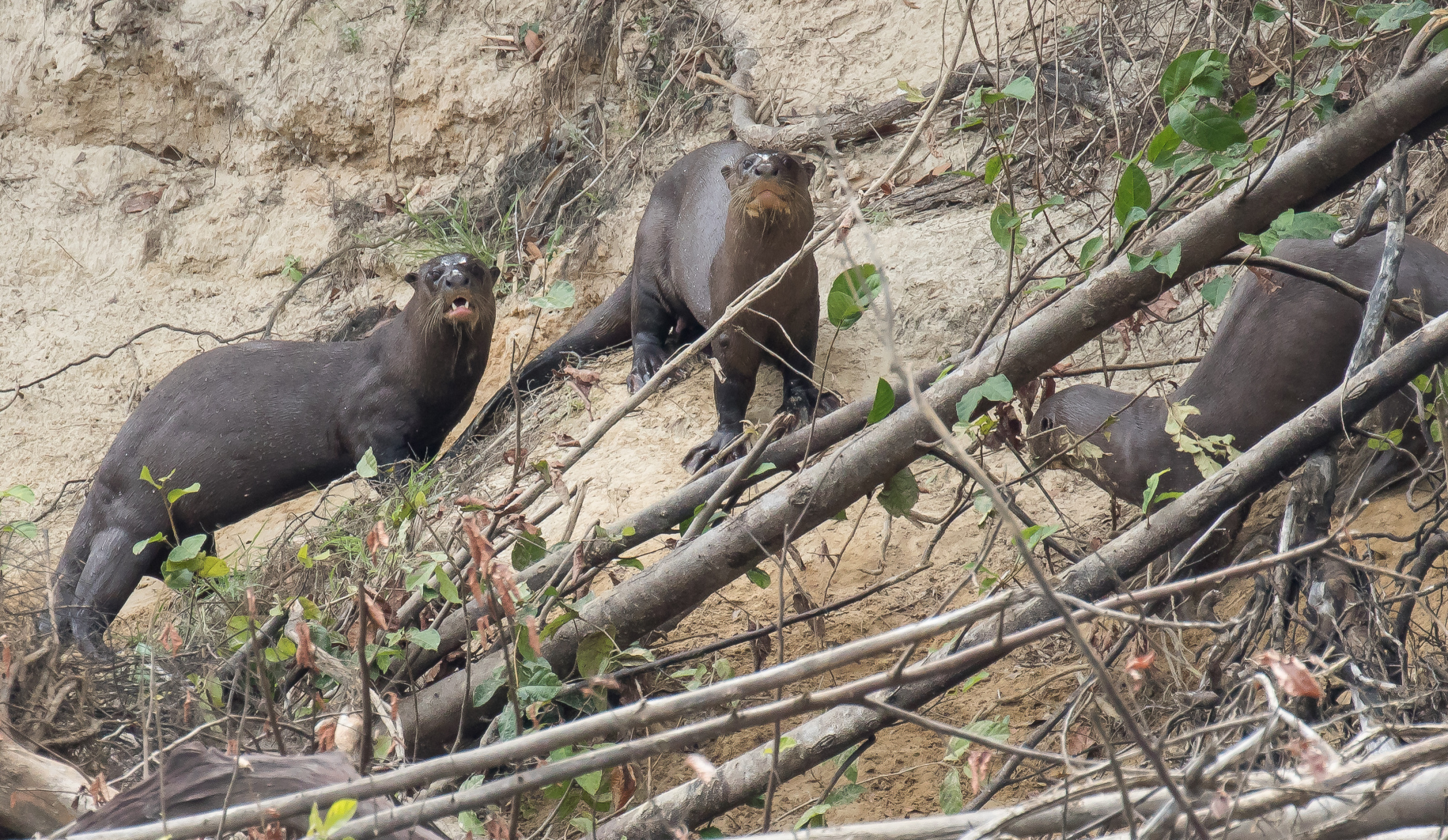
Giant Otters are 1 of 13 different species of otters. They are the longest otter with males reaching lengths of 6ft and females growing to about 5.5ft.
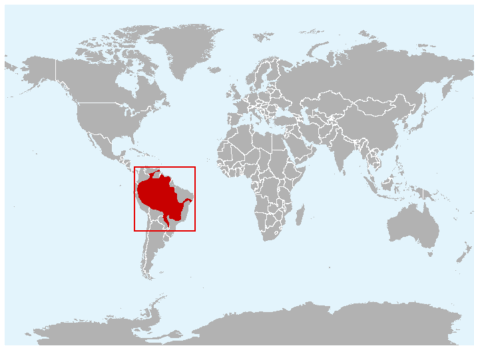
Giant Otters' primary diet is fish. They have very sharp teeth and strong jaws to help them catch fast moving fish and eat them whole, chewing up bones, scales, spines and all. To prevent the fish bones from irritating their mouth and digestive tract, they have a very thick saliva to help their food glide down with ease. Since they will often feed on fish with sharp spines or even venomous barbs, they typically catch their prey, then bring it over to a river bank or fallen log to rest and carefully chew around any potential hazards on the fish.
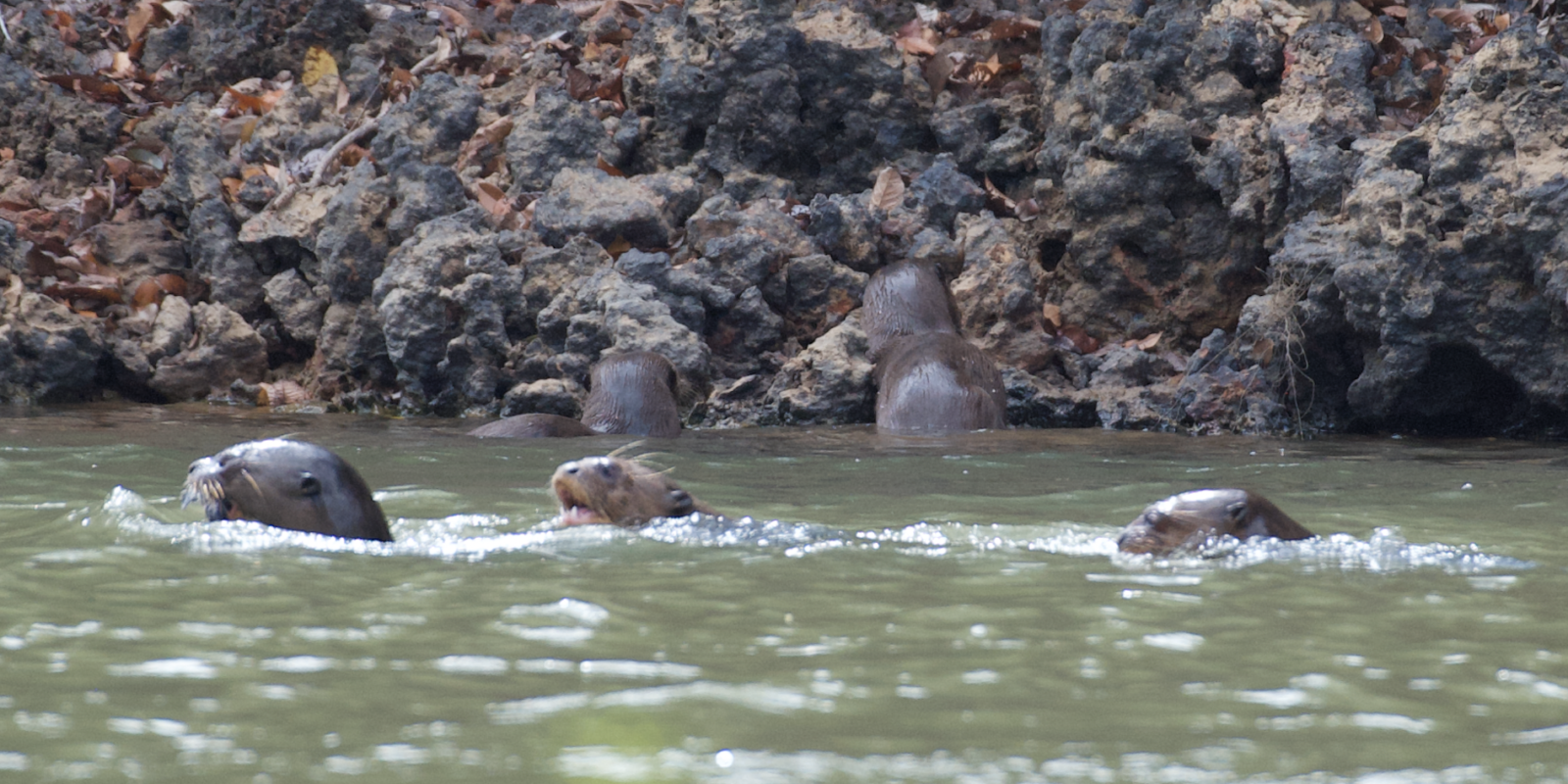
Giant otters live in tight knit family groups that are dominated by a breeding pair, the rest of the group consists of their offspring up until the age of reproduction. Giant otters become mature between the ages of 3 and 5 years old. Group sizes can vary but have been recorded of up to 20 individuals in some instances. Typically group sizes are seen more along 2-10 individuals. The entire family group helps to raise the young and they all work together to find and acquire food. Because they hunt in a pack like structure some of giant otter nicknames are water dogs and river wolves.
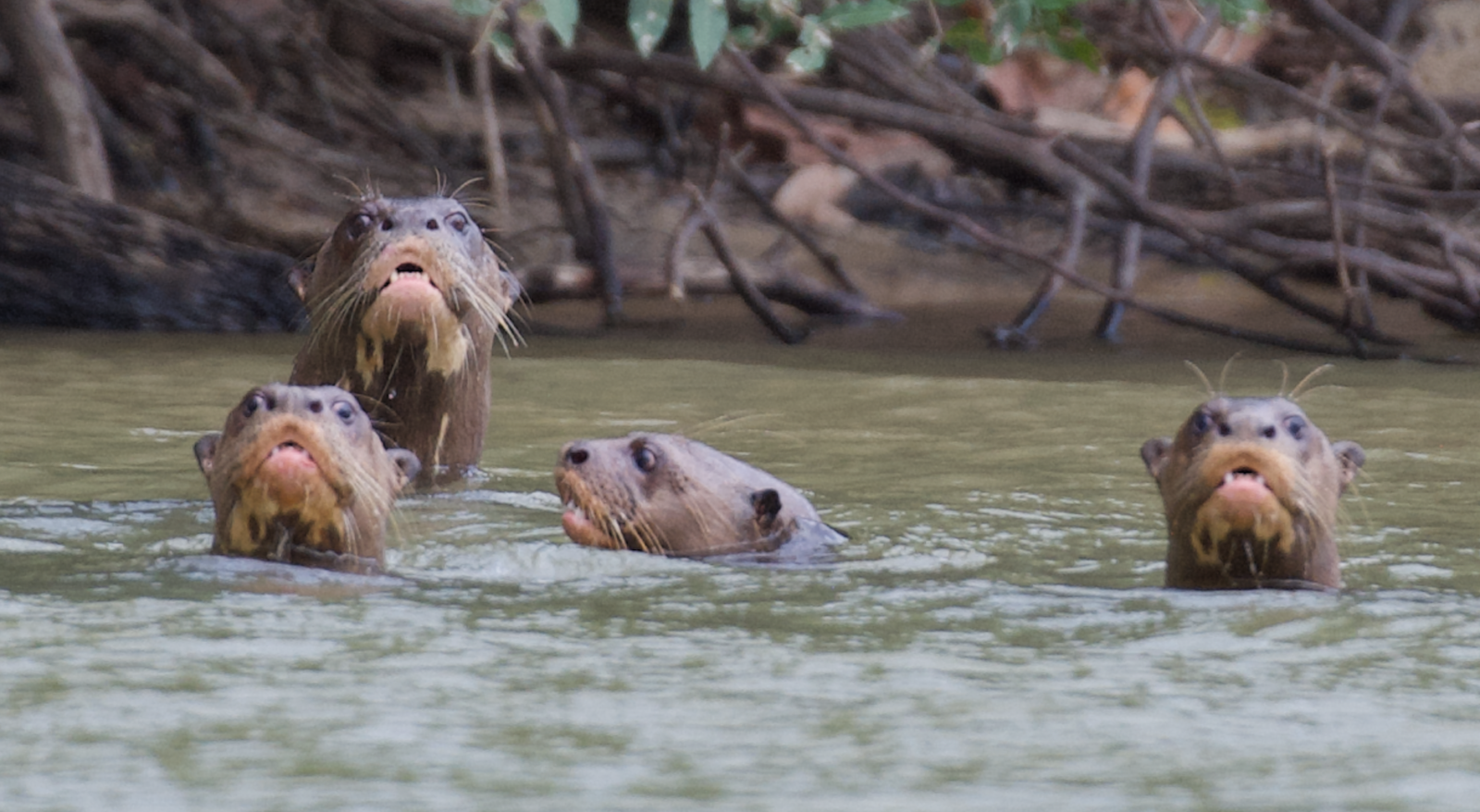
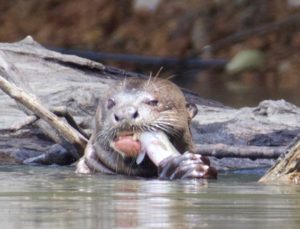
Giant Otters are found in the Rainforests of South America. They are 1 of 3 species of otter on the continent of South America. You can also find the Neotropical Otter and the Marine Otter in South America. The map above illustrates potential giant otter range. They are found along fresh water rivers, lakes and streams. However finding them can sometimes be very challenging. Giant otter populations are in decline, the population is estimated to be between 1,000-4,000 individuals left in the wild. In some of its range countries the populations are fairly stable but giant otters have gone extinct in some of their range countries. A large problem for the species is a lack of genetic flow across the population due to habitat loss and habitat fragmentation.
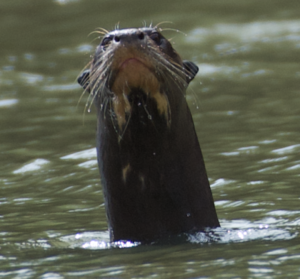
Giant otters are extremely intelligent and are excellent at pattern recognition. Each individual giant otter has a unique throat patch which they can be identified by. Giant otters will learn the unique markings of their families throat patches as well as otters they normally come in contact with. These unique markings help researchers identify individual otters as well. One of the methods used in otter conservation research is placing camera traps out along the river. Lots of useful information about otter groups can be recorded without any people around to disturb them.
